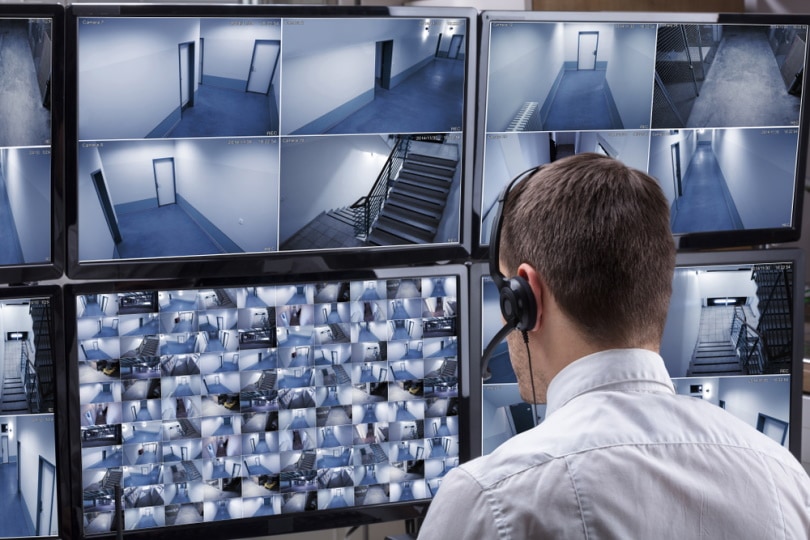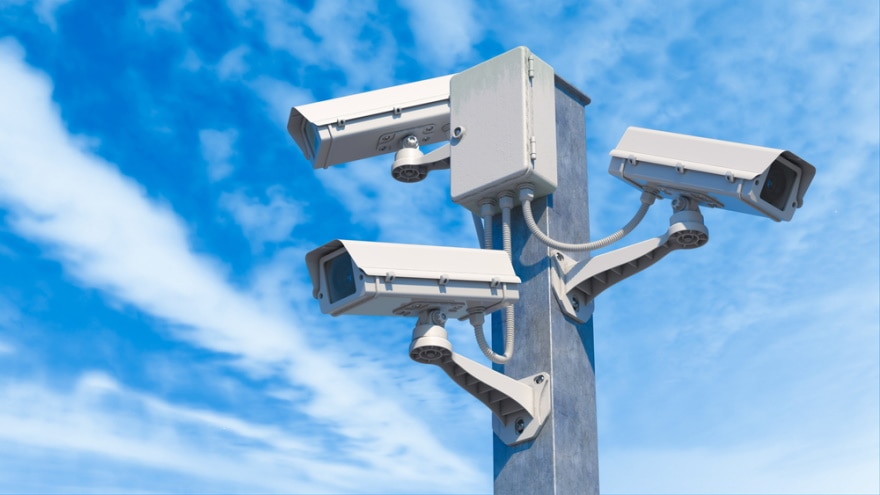Do Security Cameras Have Audio? What You Need To Know!
Last Updated on

Video might be the primary format that closed-circuit television (CCTV) is broadcasted in, but some people wonder if these systems record sound as well. Not only can it record sound, but there are laws that can dictate whether or not a security camera is allowed to even collect audio without the consent of the individuals that were recorded.
Here’s the simple answer we can give you: some security cameras can have audio recording features, but not always. Plus, many do not include it because of a firm stance some places have on privacy regulation.
In some places, there are a few exceptions and loopholes to this legality. If there are signs or a person is told that they are being monitored both by video and audio, it may be permitted. This is why it’s common for telephones to prompt you with the “this conversation is being recorded” message before the conversation begins.

How Can I Tell if a Security Camera has Audio Recording?
It depends on the specific model in question, and it’s best to inspect the elements outside the surface of the camera to see any small, pin-like holes that indicate that there is a microphone.
Built-in microphones are similar to what you have in your phone or laptop, which are difficult to see, and some may require external devices for audio recording. Sometimes, there won’t be any microphones at all because the country or jurisdiction prohibits them or because the technology is old.

Is It Legal to Record Audio on Surveillance?
In the United States, security cameras are prohibited from recording audio conversations because of two-party consent laws, but it’s up to each state to set its own rules. This means that all people who are speaking must verbally agree or sign a document stating that they allow a conversation to be recorded.
However, many home surveillance systems that incorporate doorbell dialogues do require speaking. This technically is allowed because the speaker input doesn’t store audio data.
Can Businesses Record Employees in the Workplace?
If you work at a job with security recording devices, it is illegal for audio to be captured from employees, no matter the circumstance.

Which States Don’t Allow Audio Surveillance?
There aren’t any states that legalize audio surveillance without permission. This includes public areas and stores. Below is a list of locations in the US where audio is prohibited unless all people involved give their consent:
- Montana
- Maryland
- Massachusetts
- California
- Nevada
- New Hampshire
- Washington
- Florida
- Illinois
- Delaware
- Connecticut
- Pennsylvania

What About Audio Not Stored as Data?
If you’re wondering about audio that is used for a camera’s features rather than recorded internally, you’ve come to the right place. Some high-end devices have added audio detection, which begins recording when the camera senses a sudden increase in volume. Since the audio is not kept in a memory card, it may be allowed in many jurisdictions, but it’s best to check your local laws to be confident.

Conclusion
While there are certainly security cameras that do have audio, whether or not it is legal to record the audio depends on where you live. Either way, these devices can be useful for many reasons and are becoming more common in the workplace and in private residences.
Featured Image Credit; Andrey_Popov, Shutterstock
About the Author Robert Sparks
Robert’s obsession with all things optical started early in life, when his optician father would bring home prototypes for Robert to play with. Nowadays, Robert is dedicated to helping others find the right optics for their needs. His hobbies include astronomy, astrophysics, and model building. Originally from Newark, NJ, he resides in Santa Fe, New Mexico, where the nighttime skies are filled with glittering stars.
Related Articles:
Can You Use Binoculars to Look At Stars? How to Choose the Right Pair
How to Clean a Refractor Telescope: Step-by-Step Guide
How to Clean a Telescope Eyepiece: Step-by-Step Guide
How to Clean a Rifle Scope: 8 Expert Tips
Monocular vs Telescope: Differences Explained (With Pictures)
What Is a Monocular Used For? 8 Common Functions
How to Clean a Telescope Mirror: 8 Expert Tips
Brightfield vs Phase Contrast Microscopy: The Differences Explained
